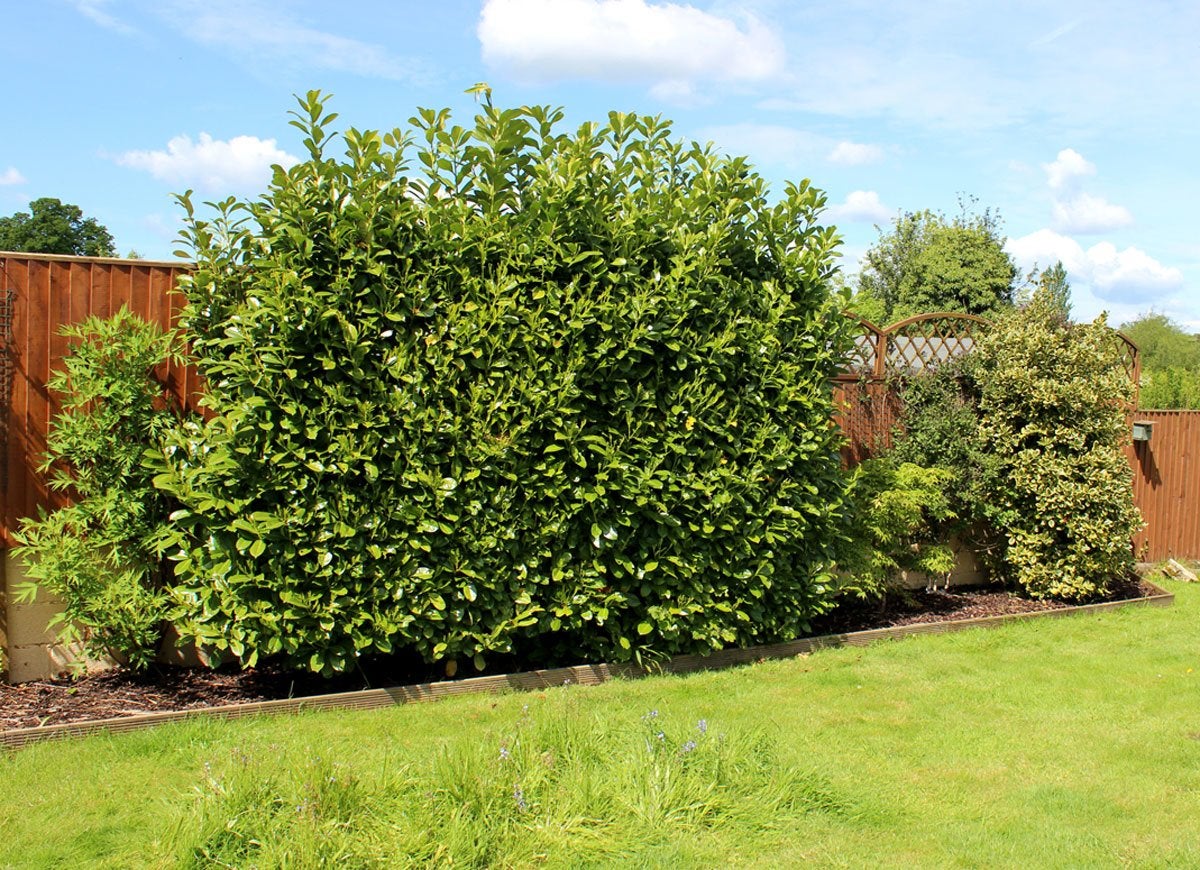We may earn revenue from the products available on this page and participate in affiliate programs. Learn More ›
Kill Weeds with Boiling Water

For an all-natural and virtually free way to kill weeds, all you need are a few kitchen basics. Fill a pot with water, bring it to a boil, then dump the water on any offending plants—the piping hot liquid will kill them instantly. This trick works especially well for weeds that pop up in cracks or joints on the patio or driveway, because the hot water could harm neighboring plants, but it won’t hurt the surrounding hardscape.
Related: 7 Weirdly Effective Ways to Weed
Use Fake Turf to Deter Dogs

Because pets use the lawn as a playground and bathroom, dog owners often end up with torn-up grass with patchy brown spots. But you can have a gorgeous lawn and keep your best friend happy too if you install lush-looking artificial grass in place of the real stuff. The turf will deter dogs from digging, conceal their bathroom area, and prevent them from tracking mud into the house. As an added bonus, homeowners with artificial grass never need to mow the lawn!
Related: 15 Affordable Landscaping Projects You Can DIY in a Day
Plant Over a Septic Tank

Septic tank covers can be a real eyesore in a garden. Instead of ignoring the sewage necessity, try covering it with layer of mulch and beautiful flowers. Homeowners can easily sweep the mulch out of the way to access the tank, and nobody will know what lies beneath the landscaping.
Related: 10 Foolproof Flowers Anyone Can Grow
Use Bulbs to Create Year-Round Color

Many flowering plants have brief bloom times, and some perennials have surprisingly short lifespans, so if you want constant color in your garden, you need to plant vibrant annuals or switch out perennials regularly. For a low-maintenance alternative, plant a mix of flowering bulbs, such as snowdrops and lilies, that bloom at different times. If you rely on bulbs, you’ll have to plant only once each year, and your garden will look great from spring to fall.
Related: 19 “Zero Dollar” Garden Hacks
Prevent Flooding with a Rain Garden

Surfaces that don’t absorb rainwater, such as streets, sidewalks, and rooftops, can cause water to collect and pool, leading to flooding. You can capture the water runoff and return it to the environment by creating a rain garden, a depressed area in your yard planted with a mix of perennials and native plants. Rainwater will flow toward the garden, where it will nurture the plants and drain into the soil.
Fill Your Flower Bed with Pots

To pack your garden with color year-round, purchase pots and fill them with flowers that have different bloom times. Place the pots with blossoming plants front and center in your garden. As the season progresses, move the pots around to make the most of the flowers, and swap out pots when necessary.
Edge a Garden with Pine Board

Giving your garden a well-defined edge keeps things tidy and instantly increases curb appeal, but stone borders are expensive, and flexible plastic edging can be unattractive. A wooden border is a great compromise: Pretreated pine boards are readily available, inexpensive, and easy to cut. Simply outline the perimeter of the garden bed with a shovel or spade, then wedge in lengths of wood to create the edge.
Related:30 Low-Maintenance Plants for Your Easiest Garden Ever
Pack Planters with Peanuts

Although large, dramatic planters and pots pack a punch in any landscape, they can become inconveniently heavy when filled with soil. Fortunately, most plants don’t actually need that much soil to take root, so you can lighten the load by filling the containers halfway with packing peanuts before adding the soil. The planters will be easier to move around, and you’ll save money on soil to boot.
Plant Ground Covers on a Slope

Maintaining a steeply sloped section of lawn can be tricky, because it can be tough to mow and can easily erode from exposure to wind and water. Structural solutions like retaining walls or terracing can be expensive, and most plants don’t grow deep roots fast enough to control erosion. As a solution, try planting ground covers like English ivy, periwinkle, or dead nettle, all of which grow quickly and densely, making them ideal for holding the soil in place.
Related: The Best Low-Maintenance Ground Cover Plants for Your Property
Best on the Block

Put these tricks to work and soon your neighbors will want to know if you hired a landscaper. Share the secrets with them for a great-looking neighborhood.

Everything You Need for a Lush and Healthy Lawn
Keeping your grass green and your plants thriving doesn’t just take a green thumb—it starts with the right tools and supplies.
